My Favorite Camera Settings and Why I Use Them
Every photographer has their own personal style and way of shooting that is unique to them. In this article I want to share some of my favorite camera settings and the reasons why I use them.
Manual Mode without Auto Exposure Bracketing
My camera is almost always on manual mode. I know many photographers who choose to shoot with aperture priority which is very similar but, for me, manual mode provides the most control. I often shoot multiple exposures with varying exposure times to capture the full dynamic range in the scene, and I usually do this very quickly. I start with a center metered exposure, view the image on the LCD, and take any additional exposures needed to capture the full range of highlights and shadows within the image. I do this by simply clicking the dial backward or forward (counting the clicks as I do – three clicks for one stop on my camera), taking the shot, viewing the LCD, and then moving onto the next composition. Sometimes the full dynamic range can be captured in one shot while other times it might take two, three, or more times. I can do all of this very fast which allows me to focus more on composition and the changing conditions within the scene.
Auto exposure bracketing doesn’t work well for me because I usually end up with too many shots on my card that I don’t need. Going in and fiddling around with the settings takes too much time, in my opinion.
Highlight Clipping Warning
I almost always have Highlight Clipping Warning enabled on my camera. With this camera setting enabled, I’m able to see on the LCD whether highlights are clipped. I can then proceed with any additional exposures needed to capture the detail in those clipped highlights. For shadows, even though there isn’t a Shadow Clipping Warning available on my camera, I almost always check the histogram.
F/16 and F/22
This is a very common camera setting for me and one that I use for many of my wide angle images. I’ve done some pretty extensive testing at this aperture with most of my wide angle lenses and it seems to be a very good trade off for maximum sharpness while still maintaining maximum depth of field. If the scene is changing very quickly and I am in a hurry to capture the best light, I simply focus about 1/3 of the way in and shoot with my aperture set to F/16. As long as my closest foreground element is farther away than about 1 or 1.5 feet, I can get great sharpness and depth of field throughout the entire image. Any closer and I usually need to do some sort of focus stacking. I often choose F/22 when I am shooting into the sun and want the most dramatic sun star.
ISO 100
ISO 100 is my go-to ISO. If nothing is moving around in the scene, such as wildflowers or water, I always shoot with the lowest ISO for maximum detail and minimal noise. If things are moving around and I need a faster shutter speed to freeze the motion, I crank up the ISO and/or do some type of focal blend.
Mirror Lockup/2 second timer
I almost always use Mirror Lockup in conjunction with the two-second timer. This has simply become a habit. I have my camera set so that when I press the shutter, the mirror flips up, there’s a two second delay to allow the vibrations to subside, and then the shot is fired off automatically. This method takes the place of having to use a cable release all the time and simplifies the process a bit. Once again, if there is anything moving within the scene and I need to time the shot for an exact moment, this method doesn’t work very well. For situations like this, I connect a cable release. I still almost always use the Mirror Lockup, just to be safe.
RAW
Shooting in RAW gives me the most detail and dynamic range which is essential during the editing process. I find that Auto White Balance does a good job of giving me a great starting point for the white balance within the images I shoot. I almost always fine-tune this in processing.
Feel free to share you own favorite setting in the comments below.


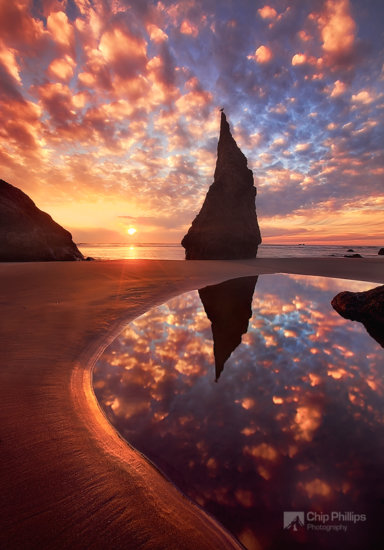
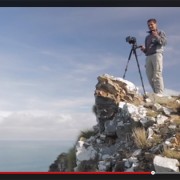
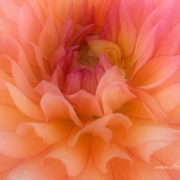
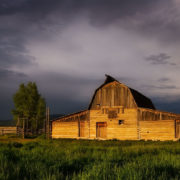


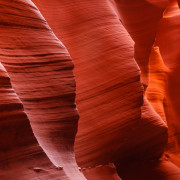


Hi Chip,
Great article., pretty much in line with what I do, perhaps because you were one of my mentors a few years back. I also hate loading my card and hard drive and the extra time involved with bracketing everything. It’s a pain to remember to turn it off. On images with a LOW dynamic range, I expose to the right, with about 1/3 of the blank space on the right and 2/3 on the left. Not sure that makes much difference. I have noticed camera shake when using the two second timer with longer focal lengths (say 300mm plus), so I use the remote release in that situation or compensate with a much faster shutter speed if that is available. To eliminate the focusing 1/3 in dilemma, I note the closest object distance and the farthest object distance, then turn my focus ring 1/3 of the way from near distance to the far distance on the ring, not by numbers on the dial but actual distance I am turning the ring. Hope that makes sense. This is less that one-third of the way between close and far distances and closer to what is indicated on DoF apps.
the only time i have ever cranked my aperture down that far was with a 10 stop nd filter or to get star bursts. Everything i have read tells me the sweet spot is from f8 to f11 on many lenses. while i have not pixel peeped and am happy with my long exposures and star bursts there is a lot of info out there telling me not to close down my aperture so far. i use a 3 stop gradual nd filter to help capture the dynamic range better and try to stay in my lenses sweet spots. should i just work more with camera settings and different exposures than use a grad filter ?
Hi Chip
I have just bought a Canon 5DSR with Carl Zeiss lenses. They say the optimum sharpness is achieved at f9.
I like to enlarge my images 30×24 or maybe slightly larger. Would you say I should stick to f9 or go to f16 and accept that diffraction will make the images slightly softer
cheers
Thank you for explaining your favorite settings with good reasoning.
I have often read that I should focus 1/3 of the way in, which I understand to be a stand-in for the hyperfocal distance. But I’ve never understood what 1/3 of the way in means. If I want everything out to infinity to be in focus, I should focus at 1/3 of infinity which is… infinity. Somehow, I don’t think that is what is meant. Can you explain what is really meant?
Thanks!
Hi Hugh,
If you are using a very small aperture, like f/16-f/22, with a wide angle lens, then focusing 1/3 of the way in usually will give you very good depth of field all throughout the image. To focus 1/3 of the way in, just adjust your focus while composing the shot so that the elements that are about 1/3 of the way into the frame are in focus. While doing this, your lens will be wide open so the areas closest to you and farthest away will look a little blurry but once you take the shot your lens will stop down and everything within the scene should be nice and sharp. Hope this helps! Thanks, Chip
The part I’m confused by is what 1/3 of the way in means. 1/3 of infinity is still infinity. If we assume a horizon of 24 miles, 1/3 of the way to the horizon is 8 miles, and I should be focusing at 8 miles (assuming I can figure that out). Is that what you’re saying or am I misinterpreting what 1/3 of the way in means?
Hi Hugh,
It is actually more simple than that. By 1/3 of the way in, I just mean 1/3 of the way into what you see on the LCD if in live view, or the image through your viewfinder. It is really just an estimate and doesn’t need to be exact because the depth of field is so good with that small of an aperture. Make sense? Thanks, Chip
Thanks for sharing this article. I too prefer shooing (RAW) in manual mode. Tried AP a few times & it simply didn’t work for me. When it comes to white balance I usually go with cloudy.
Rick in Spokane
Excellent tips and good advice
I try to avoid f 22, even though I use excellent glass on my D800: difrection is horrible and downgrades the image quality. I either use image stacking or rather employ my 24mm f 3.5 Nikkor P-CE LENS, tikted and adequatel focused in the process. Thanks for the great tips.
Please forgove the typos
Thank you Chip for the great tips, I will use mirror lockup in the future, if my camera has it.
I used to bracket my shots manually, but now I often use auto bracket, especially if the clouds are moving fast. I also experienced problems to blend my sky in the past using manual backeting, because the clouds moved significantly between two shots. With auto bracket, I am sure that the shots are fired as quickly as possible.
I have no doubt your lens performs very well at f22. I just would like to warn the people that with another body/lens combination (let us say, a not so high end one), sharpness could be real catastrophe at f22. I learned it the hard way with one of my shots :)
One last comment, about highlight clipping. When there is a great sunset with a lot of colors, I now check for clipped highlights on every chanel, red, green and blue. Or if the camera does not have it, i would check the red, green and blue histograms. I already took a shot from a fantastic, very orange, sunrise. According to the highlight clipping warning, everything was ok on the RGB chanel. In lightroom, I then saw that the red highligts, and only the reds, where clipped. Instead of being orange, a part of my sunrise was yellow because of the lacking information in the red channel.
I didn’t know it was possible to clip just one channel, I didn’t find any information about that, but I think it could make sense. Another lesson learned the hard way for me :)
Thanks for this – nice reminder to use my tripod in low light instead of opening up aperture or bumping ISO. I need to be better at using those three legs – I almost always have them with me…
Was the last sentence in Highlight Clipping Warning also clipped? Thx.
Thanks…Good catch. ;)